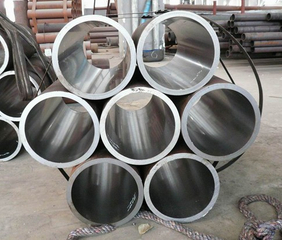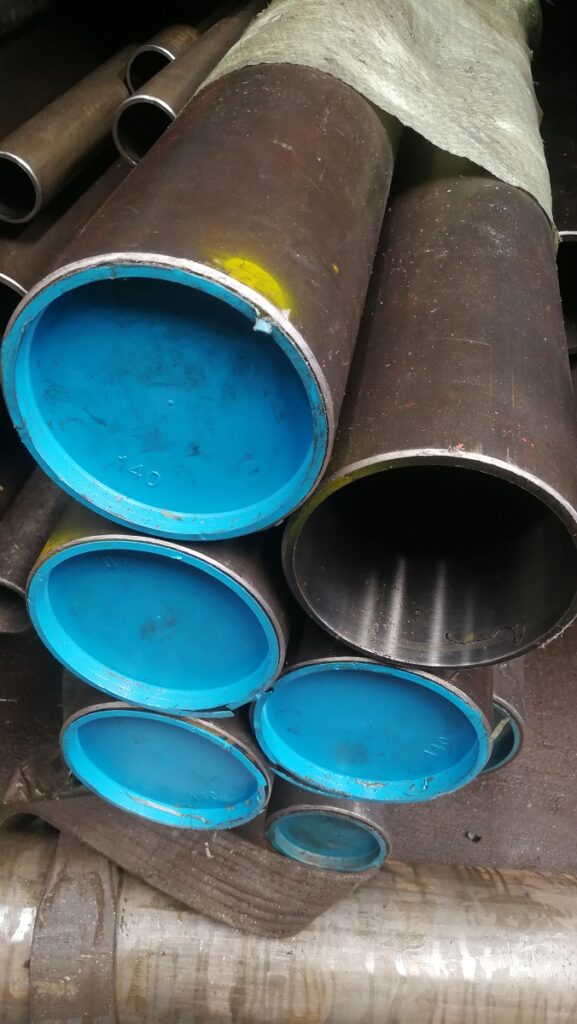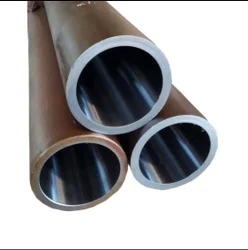There are mainly two different types of seamless steel tubes, which are cold drawn seamless tubes and hot finished seamless tubes. These two types are quite different products, and this article introduces the differences.
I. Introduction
A. Definition of seamless tubes
Seamless tubes are cylindrical pipes that are manufactured without any welding or seams. They are widely used in various industries due to their exceptional strength and durability.
B. Importance of understanding the differences between hot finished and cold drawn seamless tubes
It is crucial for industries that rely on seamless tubes to understand the differences between hot finished and cold drawn seamless tubes. The choice between the two types can have a significant impact on project performance and efficiency.
II. Cold Drawn Seamless Tubes
A. Definition and manufacturing process
Cold drawn seamless tubes are created by forcing a solid billet through a die to form the desired shape and size. This process ensures a seamless and uniform finish.
B. Advantages
1. Superior dimensional accuracy and surface finish
Cold drawn seamless tubes exhibit higher dimensional accuracy and a smoother surface finish compared to hot finished tubes. This makes them ideal for applications that demand precise measurements and a polished appearance.
2. Enhanced strength and hardness
The cold drawing process enhances the strength and hardness of the tubes, making them highly resistant to deformation and wear. This makes them suitable for applications that require exceptional tensile strength and durability.
3. Excellent machinability and weldability
Cold drawn seamless tubes possess excellent machinability and weldability, allowing for easy fabrication and assembly. This versatility makes them suitable for a wide range of applications.
C. Applications
1. Automotive industry
Cold drawn seamless tubes are commonly used in the automotive industry for various components, such as engine parts, exhaust systems, and fuel lines. The superior strength and dimensional accuracy of these tubes ensure optimal performance and safety.
2. Hydraulic Industry
Cold drawn seamless tube is the ideal material to produce honed tube, which is used as hydraulic cylinder tube, to producing hydraulic cylinder barrel, which is a crucial part of the hydraulic cylinders.
3. Oil and gas sector
The oil and gas industry relies on cold drawn seamless tubes for critical applications, including pipelines, drilling equipment, and refineries. The exceptional strength and reliability of these tubes are essential for ensuring the safety and efficiency of operations.
3. Marine engineering
Cold drawn seamless tubes are widely used in marine engineering for applications such as shipbuilding, offshore structures, and underwater pipelines. The dimensional accuracy and surface finish of these tubes are crucial for withstanding harsh marine environments.
III. Hot Finished Seamless Tubes
A. Definition and manufacturing process
Hot finished seamless tubes are created by subjecting a solid billet to high pressure and heat, shaping it into the desired form. This process allows for greater flexibility in size and shape.
B. Advantages
1. Versatility in size and shape
Hot finished tubes can be produced in a wide range of sizes and shapes, making them highly versatile for various applications. This flexibility allows for customization and adaptation to specific project requirements.
2. Suitable for high-temperature and high-pressure applications
Hot finished tubes have the ability to withstand extreme temperatures and pressures, making them suitable for applications in industries such as power generation, chemical processing, and aerospace.
3. Good strength and durability
Hot finished tubes exhibit good strength and durability, making them suitable for applications that require reliable performance under heavy loads and harsh conditions.
C. Limitations
1. Lower dimensional accuracy and surface finish
Hot finished tubes may have lower dimensional accuracy and a rougher surface finish compared to extruded tubes. This may not be suitable for applications that require precise measurements or a polished appearance.
2. Limited machinability and weldability
Hot finished tubes may have limited machinability and weldability compared to extruded tubes. This may pose challenges in fabrication and assembly processes.
D. Applications
1. Power generation
Hot finished seamless tubes are commonly used in power generation plants for applications such as boilers, turbines, and heat exchangers. The ability to withstand high temperatures and pressures is crucial for efficient power generation
2. Petrochemical industry
The petrochemical industry relies on Hot finished seamless tubes for various applications, including reactors, heat exchangers, and distillation columns. The strength and durability of these tubes are essential for withstanding corrosive environments.
3. Mining and construction
Hot finished seamless tubes are used in mining and construction for applications such as drilling equipment, excavators, and structural components. The versatility in size and shape allows for customization to meet specific project requirements.
4. Hydraulic cylinder industry
As hot finishing process can make super large diameter seamless tubes, so for the super large hydraulic cylinder tube sizes, people will mostly use hot finished seamless tubes to manufacturer.
IV. Key Differences between Hot finished and Cold Drawn Seamless Tubes
A. Manufacturing process
Cold drawn seamless tubes are produced by forcing a solid billet through a die, while hot finished tubes are created through high-pressure shaping of a solid billet.
B. Dimensional accuracy and surface finish
Cold drawn seamless tubes exhibit higher dimensional accuracy and a smoother surface finish compared to hot finished seamless tubes.
C. Mechanical properties
Cold drawn seamless tubes have enhanced strength and hardness compared to hot finished seamless tubes.
D. Machinability and weldability
Cold drawn seamless tubes possess better machinability and weldability compared to hot finished seamless tubes.
E. Cost and production time
Cold drawn seamless tubes may have higher production costs and longer production times compared to hot finished tubes.
V. Factors to Consider when Choosing between Hot finished and Cold drawn Seamless Tubes
A. Application requirements
Consider the specific requirements of the application, including dimensional accuracy, surface finish, mechanical properties, and temperature/pressure resistance.
B. Budget constraints
Evaluate the cost-effectiveness of both types of tubes and consider the available budget for the project.
C. Lead time and availability
Consider the lead time required for production and the availability of the desired type of tube.
D. Quality and performance expectations
Assess the quality and performance expectations of the project and choose the type of tube that best meets those requirements.
VI. Conclusion
A. Recap of the differences between extruded and forged seamless tubes
Cold drawn seamless tubes are manufactured through a drawing process, resulting in superior dimensional accuracy, surface finish, strength, and machinability. Hot finished seamless tubes are created through high-pressure shaping, providing versatility in size and shape, suitability for high-temperature and high-pressure applications, and good strength and durability.
B. Importance of selecting the appropriate type based on specific needs
Choosing the appropriate type of seamless tube based on specific needs is crucial for achieving optimal performance and efficiency in various industries.
C. Final thoughts on the significance of understanding these distinctions in various industries
Understanding the differences between Cold drawn and hot finished seamless tubes is essential for industries that rely on these tubes for their applications. By considering factors such as manufacturing process, dimensional accuracy, mechanical properties, machinability, and cost, industries can make informed decisions and select the most suitable type of tube for their projects.




